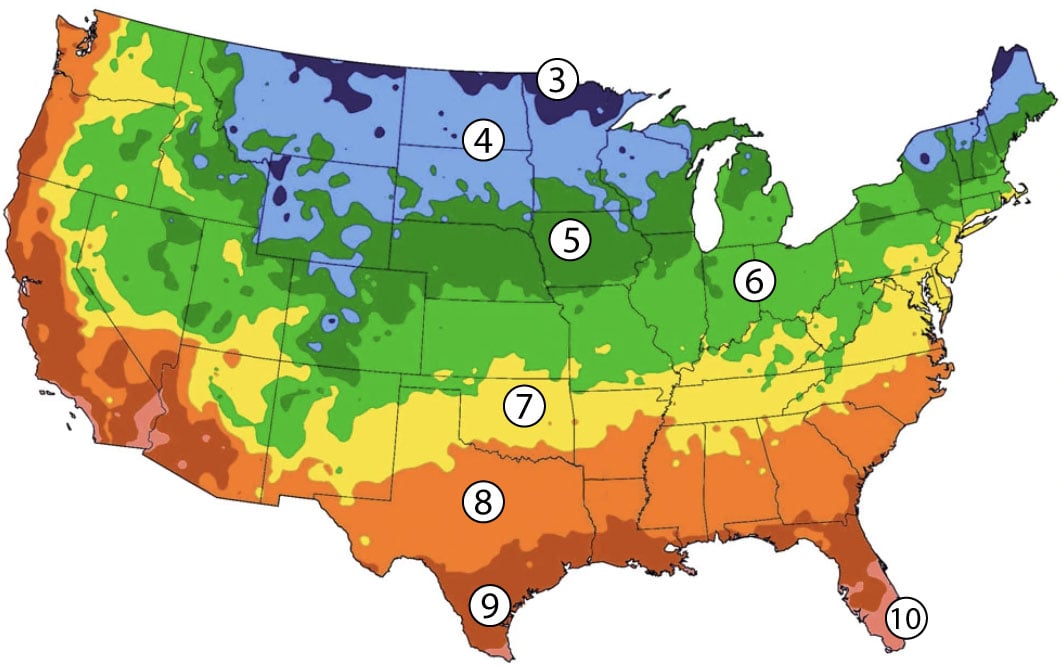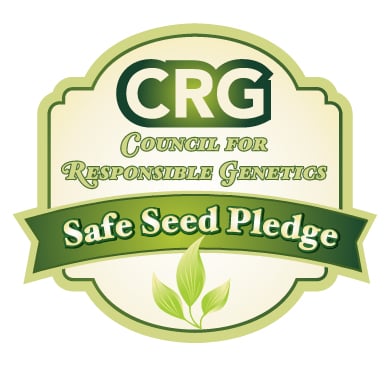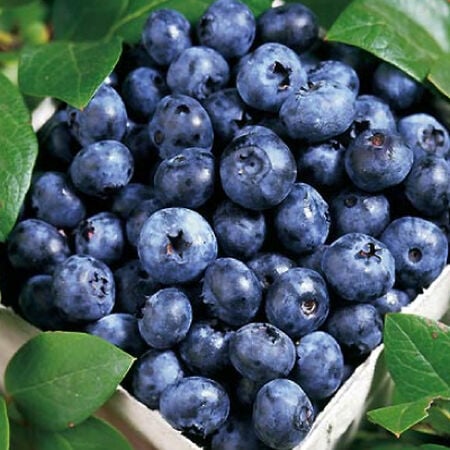Blueray, Blueberry Plant
Key Attributes
Key Attributes
Product Details
Weight
1Depth
3Height
14Width
3Plant Height
3-8'Botanical Name
Vaccinium corymbosumSow Depth
10"Breed
Open-pollinatedSun
Full SunRoot Age
1 Year PlantLife Cycle
PerennialCategories
FruitDays To Maturity (# Days)
730Components
Growing Instructions
![]() Learning Download: How to Grow Blueberries
Learning Download: How to Grow Blueberries
Fresh blueberries are a summer staple in many gardener’s homes. Blueberries can be used for jams, making muffins or eating raw.
Before Planting: Soil pH should be between 4 and 5, as blueberries thrive in acidic soil. Prior to planting, prepare a mixture of two parts loam and one part moss, oak leaf mold, compost or aged sawdust.
Planting: Plant blueberry bushes as early in the spring as possible. Their root system is shallow, so be sure to plant in soil that holds moisture bu also drains well. Make sure its roots are spread out in the hole and then pack tightly with soil. Blueberries also can grow well in containers.
Watering: Blueberries require at least 1 to 2 inches of water per week.
Fertilizer: Apply fertilizer for the first time one month after planting, using 1/2 ounce of a 10-10-10 fertilizer applied about 6 inches form the crown of the plant.
Days to Maturity: Harvest blueberries in late July or early August. (See varieties for days to maturity)
Harvesting: Once berries turn blue, wait a few days and then pick them.
Tips: Blueberries are popular amongst birds, so add a protective cage around the plants.
Shipping Schedule
Blueberry plants will ship at the appropriate time for your planting zone. The chart below estimates when your blueberry plants will arrive. You will receive an email notifying you when your strawberry roots ship giving you a few days to prepare for planting.
This item’s size, weight, or shape may require an additional shipping surcharge based on the shipping location selected. Specific charges will be displayed during checkout. We are unable to take specific shipping dates at this time.
*This product is perishable and does not ship outside the United States.
|
 |
Our Seed Promise
 "Agriculture and seeds" provide the basis upon which our lives depend. We must protect this foundation as a safe and genetically stable source for future generations. For the benefit of all farmers, gardeners and consumers who want an alternative, we pledge that we do not knowingly buy or sell genetically engineered seeds or plants.
"Agriculture and seeds" provide the basis upon which our lives depend. We must protect this foundation as a safe and genetically stable source for future generations. For the benefit of all farmers, gardeners and consumers who want an alternative, we pledge that we do not knowingly buy or sell genetically engineered seeds or plants.
The mechanical transfer of genetic material outside of natural reproductive methods and between genera, families or kingdoms, poses great biological risks as well as economic, political, and cultural threats. We feel that genetically engineered varieties have been insufficiently tested prior to public release. More research and testing is necessary to further assess the potential risks of genetically engineered seeds. Further, we wish to support agricultural progress that leads to healthier soils, to genetically diverse agricultural ecosystems, and ultimately to healthy people and communities.
To learn more about the "Safe Seed Pledge" please visit www.councilforresponsiblegenetics.org.

